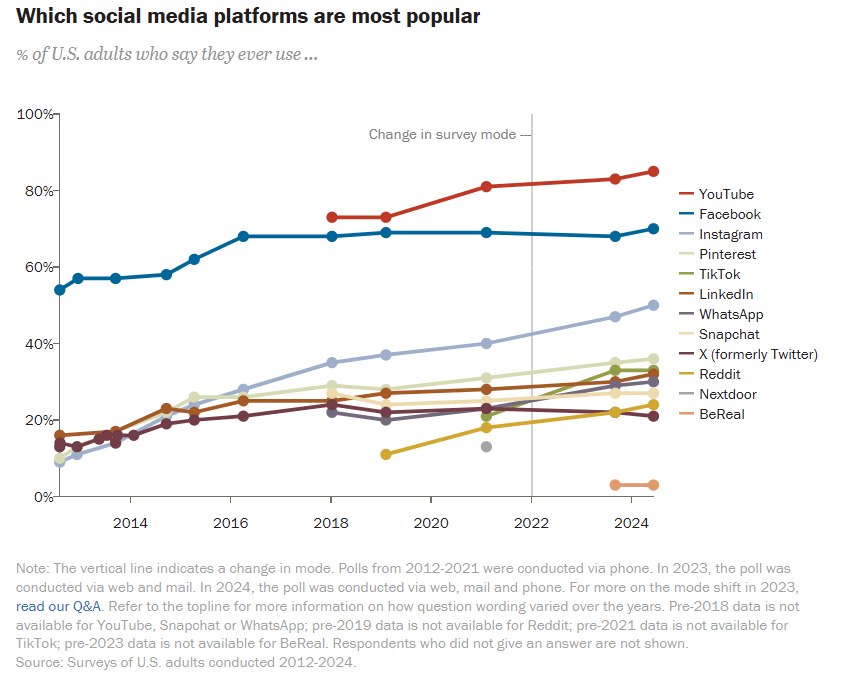Facebook still a dominant force among older generations

Younger generations crave instant gratification. With shorter attention spans, they seek quick, engaging content that delivers immediate impact.
This shift is driving the popularity of platforms like TikTok and Snapchat, where fast-paced, short-form videos capture their focus and keep them coming back for more.
Revealing insights into how Americans are engaging with their digital platforms, Pew Research has shed light on the latest trends in social media usage for 2024 in a new report.
According to the survey, which surveyed 5,626 US adults between Feb. 1 and June 10 of this year, YouTube continues to lead the pack as the most popular platform.
Despite debates over whether it should be classified as a “social” app (since it’s mainly focused on video content), YouTube remains the top choice for many users. Moreover, it stands head and shoulders above its competitors in terms of usage.
The data also highlights that Facebook and Instagram remain significant players, with both platforms holding strong user bases.
Facebook, in particular, is still a dominant force among older generations. Nearly half of US adults report using Instagram, which has solidified its place as a staple in the social media ecosystem.
For users, this means that these platforms are where much of the digital conversation still takes place.
Whether it’s staying connected with friends or following popular brands and influencers, Facebook and Instagram continue to provide a space for both personal and professional engagement.
However, while these platforms dominate, there’s also a shift towards younger, trendier apps such as TikTok and Snapchat, which continue to attract a youthful audience.
This shift signals a change in how younger generations engage with social media, favoring more dynamic, short-form content and interactive experiences.
TikTok, for example, has reshaped how users consume content, making it more about quick bursts of entertainment rather than long-form posts. For users, this trend means they can expect a faster-paced, more visually-driven environment, reflecting the increasing demand for content that is immediate and easily digestible.
In comparison to the major players, X (formerly Twitter) falls further behind in terms of usage, but still maintains a steady share of the market.
The Pew Research team emphasizes that these trends are based on a survey sample of US adults, which although not representing the full spectrum of global social media usage, still provides valuable insights into the shifting preferences of American users.



